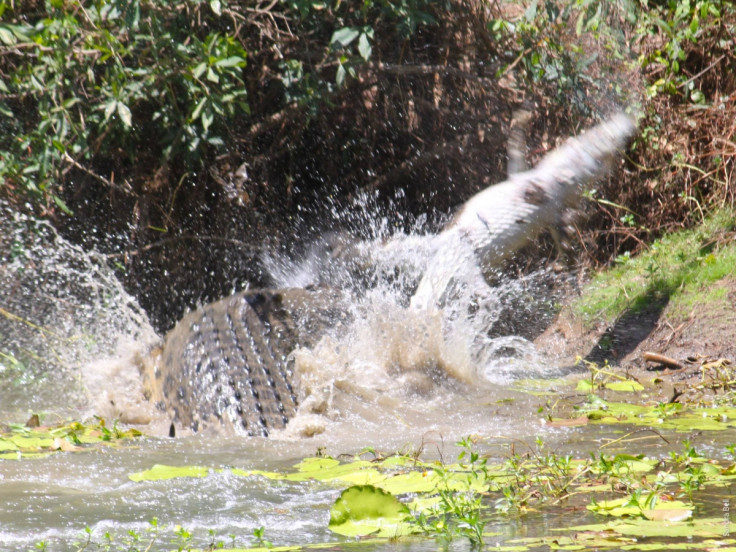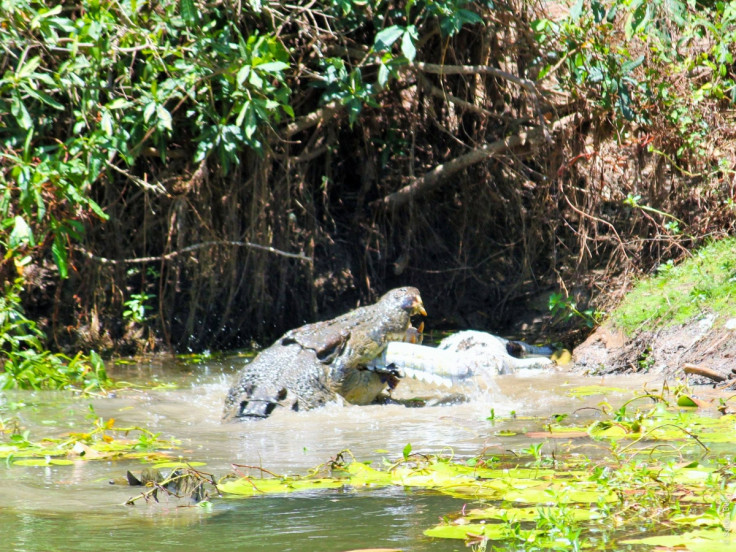Cannibal crocodile tears rival apart and feasts on remains in Queensland
Two crocodiles have been pictured fighting to the death before the cannibal victor feasts on the remains of his opponent. The images were taken in Rinyirru (Lakefield) National Park in North Queensland and show the larger saltwater crocodile flipping his opponent around in the air before killing him.
Photos of the primordial battle were taken by Sandra Bell, who sent the images in to Queensland National Parks. The fight took place just a few hundred metres from a sign warning visitors about the presence of crocodiles in the area.
Adam Britton, a crocodile specialist with wildlife management and filming company Big Gecko, told the Sydney Morning Herald cannibalism among these types of crocodiles is fairly common: "Saltwater crocs can definitely be cannibalistic, particularly this time of year at the start of the wet season," he said. "You are getting an increase in temperature, getting more rainfall and that is triggering the crocodile's breeding behaviour."

Most of the time these fights take place between dominant males and smaller males – if the larger male comes across a smaller rival it will first try to drive it out of its area. Failing that, Britton said "they are quite happy to go kill them".
"It is usually males eating males. I wouldn't rule out the possibility for a male to attack and kill a female, that can happen but in this particular situation, males are looking for females, they want females to breed. The males are very large and so they have the capabilities to kill other crocodiles quite easily."

Britton also said it is common for crocodiles to throw their opponent from the water, as seen in the picture, as they want to try to kill and rip it apart: "They will grab part of it, usually towards one of the extremities, and they will lift their entire front part of their body out of the water and they flick their head like a whip."
"By doing that it is exerting an enormous amount of tearing force and it literally causes an animal to tear in two. They do this when they are trying to dismember prey, or trying to rip something off the prey to break it into smaller pieces so they can swallow it, but it is also very effective at killing competitors."

Queensland National Parks also said the smaller crocodile could have been dead before the images were taken. It also stressed the importance of being "croc-wise" whenever you are in an area where crocodile could be living. "There are warning signs wherever we think there might be an overlap of humans and crocs ... but the safest thing is to assume that while you're in croc country there's a croc in the water.
"Although crocs are most often seen in tidal reaches of rivers, they can also be found in freshwater lagoons, rivers, and swamps hundreds of kilometres inland from the coast and even along beaches and around offshore islands in the Great Barrier Reef and Torres Strait."
© Copyright IBTimes 2025. All rights reserved.






















